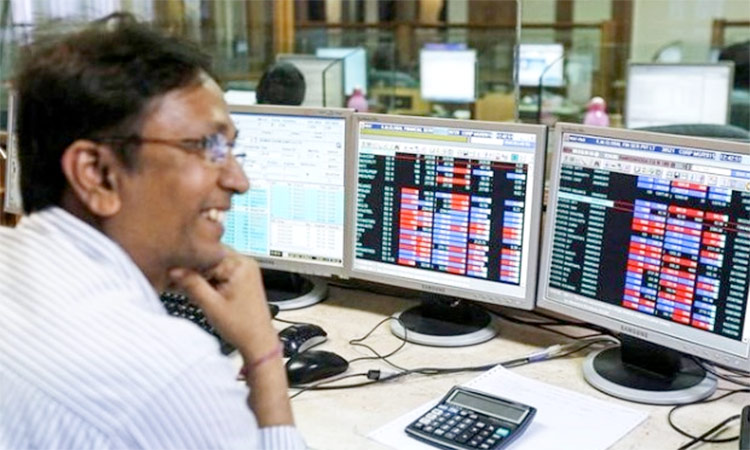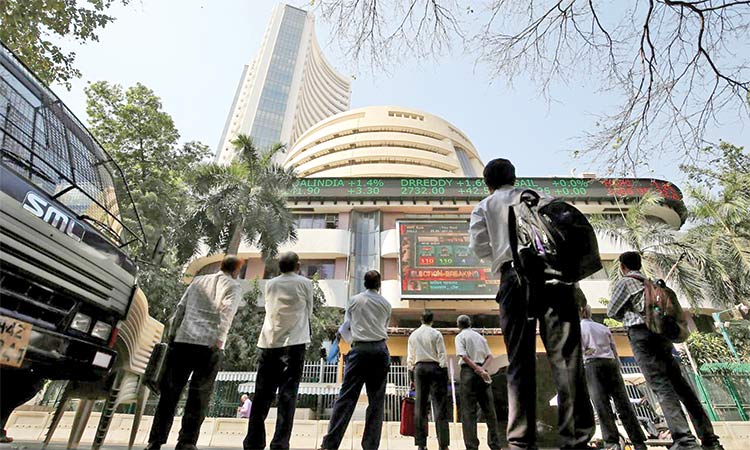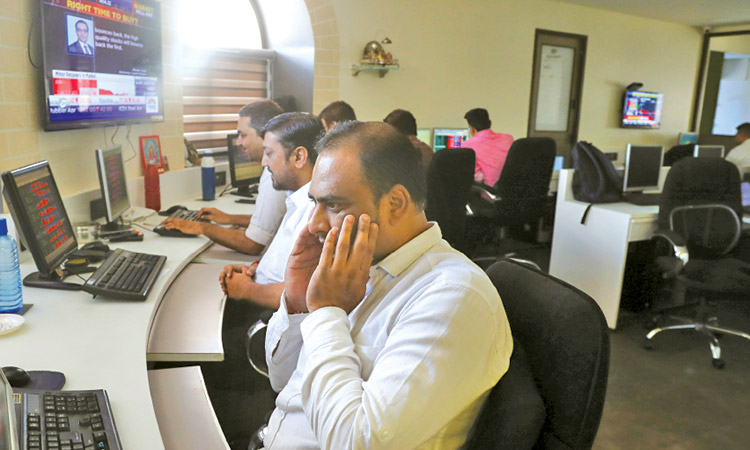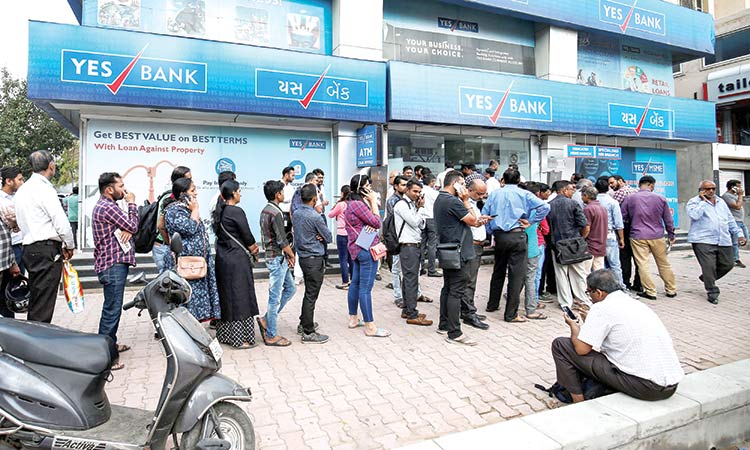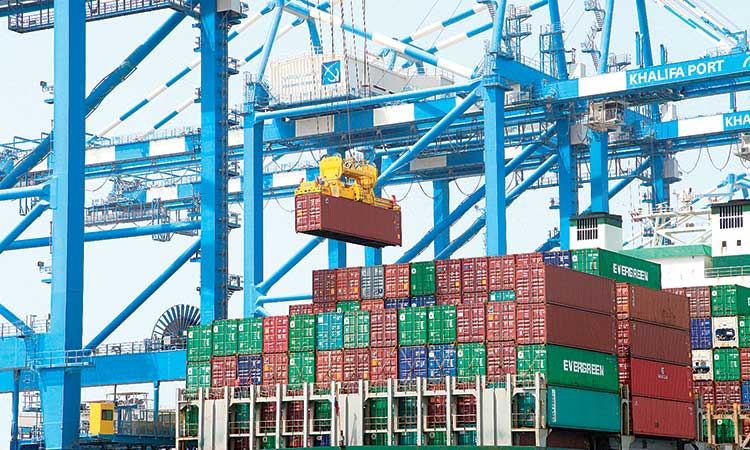Sensex nears life-time high, rises 428 points to finish at 41,010
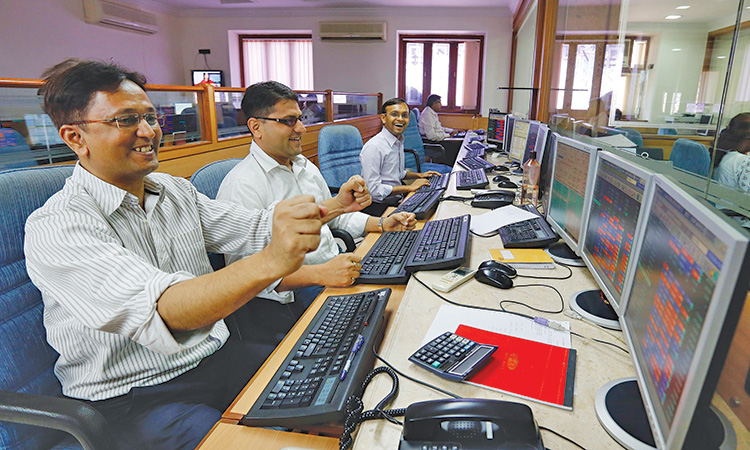
An Indian stock broker reacts while watching the BSE index on his trading terminal in Mumbai, India. Associated Press
Market benchmark BSE sensex jumped over 400 points to reclaim 41,000-mark on Friday led by global euphoria over progress in US-China trade and likely Conservative Party win in UK general elections.
The 30-share index finished 428 points or 1.05 per cent higher at 41,009.71. Similarly, the broader Nifty jumped 114.90 points or 0.96 per cent to finish at 12,086.70 Axis Bank was the top gainer in the sensex pack rallying up to 4.21 per cent, followed by Vedanta, SBI, Maruti, IndusInd Bank, Yes Bank and TCS. 24 out of 30 stocks closed in green.
On the other hand, Bharti Airtel was the top loser, shedding up to 1.98 per cent. Kotak Bank, Bajaj Auto, Asian Paints, HDFC and Hidustan Unilever were the other losers.
Global equities were trading on a firm note on Friday after reports that the US and China may sign a long-awaited trade deal.
The world’s two largest economies were expected to seal an interim agreement which would see US drop some tariffs and Beijing to buy more American goods.
Sensex gained 400 points despite the consistent fall in GDP growth rate, and a spike in retail inflation which has sparked fears of stagflation.
On Thursday, the official data showed that retail inflation soared to 5.54 per cent in November, a steep rise of 92 basis points from the inflation number of the previous month.
NR Bhanumurthy, Professor, National Institute of Public Finance and Policy told IANS: “There appears to be a textbook case of stagflation...” but the current rise is chiefly owing to rise in food prices.
Metal stocks surged nearly 2 per cent while PSU Banks also jumped over 3 per cent. Vedanta emerged as the top Sensex gainer, gaining nearly 4 per cent followed by Axis Bank, Tata Motors A(DVR), SBI, TCS and Yes Bank.
The Sensex saw only four laggards: Bharti Airtel, Kotak Bank, Bajaj Auto and Asian Paints. The Sensex advanced over 300 points during the early trade on Friday while the Nifty surpassed the 12,000 mark.
Investors were upbeat owing to the Fed’s dovish stance on future rate trajectory and strengthening rupee.
At 10.11 am, the Sensex was up 297.16 points to trade at 40,878.87. It opened at 40,754.82 from its previous close of 40,581.71.
The Nifty was up 78.45 points to trade at 12,050.25.
According to traders domestic investors followed cues from global markets, which were enthused by reports of the completion of the first phase of US-China trade deal and Boris Johnson’s likely re-election as British prime minister The Trump administration and China are close to finalising a modest trade agreement that would suspend tariffs that are set to kick in Sunday, deescalating their 17-month trade war.
In return, Beijing would buy more US farm products, increaseAmericans companies’ access to the Chinese market and tighten protection for intellectual property rights.
Meanwhile the India’s economy, it seems, has entered the stagflation phase with the key macro-economic data showing dwindling manufacturing activity as the subdued demand conditions contracted the October factory output by 3.8 per cent. The worsening trend has also been spotted in the Consumer Price Index (CPI) as an increase in food prices lifted the November retail inflation to 5.54 per cent from 4.62 per cent in October.
However, the industrial output measured through the index of industrial production (IIP) suggests that downward production spiral has somewhat been arrested with the October output declining only 3.8 per cent against 4.3 per cent in September.
The factory output growth rate in October was nowhere near the rise of 8.4 per cent recorded in the year-ago month.
Stagflation or recession-inflation is a condition of slow economic growth and relatively high joblessness, or economic stagnation, accompanied by increasing prices, or inflation. It’s also defined as inflation and a decline in gross domestic product (GDP).
According to the IIP data, the manufacturing sector output rate contracted 2.1 per cent in October from a YoY rise of 8.2 per cent, and mining activity declined 8 per cent from a YoY growth of 7.3 per cent and the sub-index of electricity generation was 12.2 per cent lower from a rise of 10.8 per cent.
Agencies
